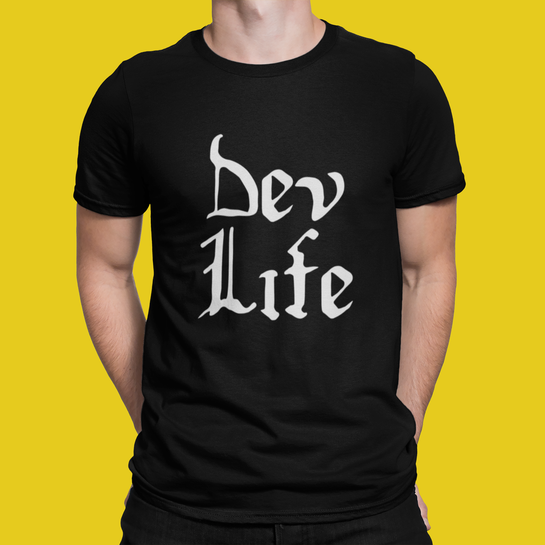DevOps & DecSecOps Roadmap [From beginner to an expert]
In this blog, I will be explaining the path that I’m following in my DevOps journey.
Join us
In this blog, I will be explaining the path that I’m following in my DevOps journey.

Dev life is a thug! This tee is comfortable and smooth. Look great and feel yourself. ✅ 100% cotton ✅ Classic fit ✅ Tear-away label ✅ Runs true to size ✅ No side seams mean ✅ No itchy interruptions un...

In this podcast episode, we welcome Kris Buytaert, consulting CTO at Inuits.eu, DevOps evangelist, one of the organisers of DevOpsDays. We talk about the conference, how to introduce CI/CD to teams, and what are some patterns and antipatterns for infrastructure as code. We also discuss why teams are reluctant to spend money on testing and operations, and what happens if they don’t.

Babelfish is a self-hosted server for source-code parsing: it has the power to parse all kinds of file, in any supported language, extracting an Abstract Syntax Tree and converting it into a Universal Abstract Syntax Tree (UAST).
CI/CD is one of the pillars of modern cloud native software development. It improves your software products and makes its development more effective and cheaper.
If you Google testing types in software engineering, you’ll certainly end with a list of hundreds of tests. We are sure not all of them will be useful for you. There are also some testing types that have two or three names and some others are very similar even if they have different names.
Contemplating moving from a Jenkins pipeline or the Jenkins Blue Ocean pipeline to something completely different? Is your colleague encouraging you to ditch Jenkins? 80% of most development teams have multiple Jenkins and are struggling to find a path forward to an improved model/tool/architecture. Why is that? This blog explains the reason why and how to move forward WITH your Jenkins and how to get to an end-to-end DevOps Pipeline.

Through deployment of a GitOps model, developers can delivery self-reconciliation and self-healing across Kubernetes clusters, without using a CI/CD system, and scale horizontally at massive scale.
Below I provide a walkthrough of GitOps from a 50,000 ft. view.

I’ve been thinking a lot lately about the relationship between manual tasks and automation. In this process, I’ve found myself describing how to move from one to the other in various contexts, and a pretty clear pattern has popped out at me. Here I distill the pattern to automate practically any process.
How to deploy a CGE Instance with Gitlab CI using Terraform and Ansible

I’ve been thinking a lot lately about the relationship between manual tasks and automation. In this process, I’ve found myself describing how to move from one to the other in various contexts, and a pretty clear pattern has popped out at me. Here I distill the pattern to automate practically any process.